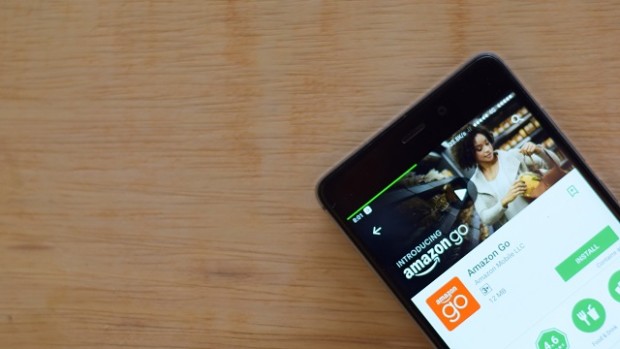
When Amazon opened the doors to its cashierless convenience store, Amazon Go, in December 2016, the industry quickly reached consensus that it was the future of retail. The media called it “mind-blowing” and “the store of the future”, and retailers, already attuned to the imperative of speed, started referencing Amazon Go as the ultimate example of convenience.
It’s no wonder that many businesses seem to have quietly tasked their teams with developing checkout-free concepts in the interim.
Woolworths started trialling an app that lets shoppers skip the queue at its Double Bay store in Sydney in September 2018, and 7-Eleven launched a similar trial in its Richmond store in Melbourne last month. Major chains including Decathlon in the Netherlands, Saturn in Germany, Sainsbury’s in the UK and Sam’s Club and Walmart in the US have also launched cashierless technology in stores.
But there is a key difference between Amazon and these retailers. While Amazon uses a pricey combination of cameras and sophisticated weight sensors to detect which items customers take off the shelf in its Go stores, and automatically charges their Amazon account when they leave, most other retailers have opted for a simpler, scan-and-go solution.
This typically involves a mobile app that customers have to download onto their smartphones and fill out with their personal information and payment details. Customers use the app to manually scan items as they walk around the store and pay. Depending on the retailer, they might be able to “just walk out” when they’re done, or they might need staff to remove security tags or check their receipt before leaving.
Skipping the queue
There are some drawbacks to scan-and-go apps. They are not nearly as frictionless as Amazon Go and they may be more prone to shrinkage, since theoretically, customers could choose not to scan an item, or scan a cheaper item, without any cameras or sensors to detect the error.
But they are also far cheaper and easier to roll out than fully automated stores. Morgan Stanley estimates it will cost Amazon between US$500 million ($717 million) and US$3 billion ($4.3 billion) to build 3000 Amazon Go stores by 2021, Bloomberg reported last September. That level of investment is simply not feasible for most retailers.
And scan-and-go apps do enable customers to skip long queues at the checkout, which, according to recent research from payments platform Adyen, cost Aussie businesses $12.5 billion in potential sales in 2018.
This was a key factor in 7-Eleven’s decision to build a scan-and-go app, which it has been working on for the past 12 months and is currently trialling in its head office store in Richmond.
“Nobody likes to wait, so eliminating queues was part of the mission for this mobile checkout,” said 7-Eleven’s CEO Angus McKay in a statement about the trial.
“In the new concept store, customers will notice the absence of a counter. The store feels more spacious and customers avoid being funnelled to a checkout location creating a frictionless in-store experience.”
A range of payment options
Another benefit is that customers can use scan-and-go apps alongside traditional payment methods like cash or card in stores. This could become important in future, as several cities in the US have banned completely cash-free stores as being discriminatory towards those who don’t have a bank account, let alone a smartphone or an Amazon account.
While 7-Eleven’s scan-and-go app is currently the only way to pay in its Richmond store – card and cash are not accepted – that won’t be the case if it progresses past the trial phase. Stephen Eyears, 7-Eleven’s head of strategy, innovation and business development, says the app would be offered in addition to traditional payment methods if it’s rolled out more broadly.
Decathlon has taken a similar approach with the launch of its scan-and-go app in the Netherlands.
“Our plan is not to kill other payment methods, but to give our customers the best
possible range of options,” Decathlon’s chief technology officer, Sybe de Graaf, tells Inside Retail Weekly.
Developed by British tech company MishiPay, the app integrates with Decathlon’s backend systems, so after a customer pays for their items in the app, the RFID tags are deactivated.
“This makes it easy for our store staff to check if the items are paid or not,” de Graaf says, since alarms will ring if the RFID tags are not deactivated, “but staff also have access to a dashboard where they can easily see the completed purchases from Scan & Go.”
Similarly, 7-Eleven has created an internal dashboard, where staff can see which customers in the store are using the scan-and-go app.
Putting the customer to work
For retailers like 7-Eleven and Decathlon, the advantages of scan-and-go apps are clear. And experts believe we will see many more businesses roll them out going forward.
“The ongoing journey towards delivering ultimate convenience is important for many, if not most retailers,” says Danny Lattouf, regional head of retail at VMLY&R.
“With Amazon Go in the US and Futuremart by Alibaba in China, it feels like it’s only a matter of time before Australian retailers start to apply this model – to test at the very least.”
Having visited an Amazon Go store himself, Lattouf is under no illusions that scan-and-go apps provide the same level of seamless shopping experience. But that doesn’t mean retailers won’t still benefit.
“In Australia, where we have significantly higher labour costs, some of the highest in the world, they make sense,” he says.
“I do, however, believe that they make sense in very limited retail scenarios – and I do believe they serve the retailer better than they serve the customer.
“They turn the customer into the checkout staff member of your business. If simple enough, that transaction may not feel painful for customers – for example, buying a bottle of Coke from a 7-Eleven – but when it’s more complex or layered than that, the friction will be felt.
“And I don’t believe it will be enjoyed the way an Amazon Go experience can entirely liberate the check-out experience.”





